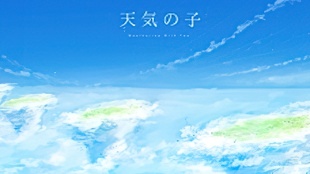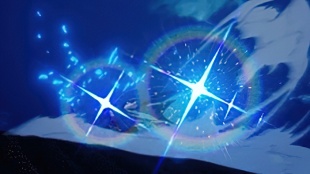您需要 登录 才可以下载或查看,没有账号?注册

x

Introduction
Hey everyone! My name is Colleen Peck Larson and I’m a 3D Character Artist at PlayStation Studios in San Diego, CA.
I’ve been in the industry for about six years as a 3D character artist after getting my BFA in illustration from San Jose State University. Most recently I had the opportunity to work on The Last of Us Part II, and I’m looking forward to sharing the other things I’ve been working on at PlayStation.
介绍
大家好!我的名字是Colleen Peck Larson,我是加利福尼亚州圣地亚哥PlayStation Studios的3D角色艺术家,
在圣何塞州立大学获得插图学士学位后,我已经在这个行业工作了大约六年。最近,我有机会参与《最后生还者》第二部分的工作,我期待着分享我在PlayStation上一直在研究的其他事情。

References/Inspiration/Early WIPs
The Hunchback of Notre Dame has always been one of my favorite Disney films. It sparked my interest in Notre Dame itself, cathedrals, medieval time period and that entire aesthetic, so it was very fun to dive into this project. I have a big passion for classical art, sculpture, and history, so I drew a great deal of inspiration from the old masters like Rembrandt, Bernini, Van Dyck and historical sources as well as many games and movies. My intention with this project was to redesign Frollo in a more realistic/historically accurate way, but maintain some echoes of the original design.
参考/灵感/早期WIP
《巴黎圣母院的驼背》一直是我最喜欢的迪士尼电影之一。它激发了我对巴黎圣母院本身,大教堂,中世纪时期和整个美学的兴趣,所以潜入这个项目非常有趣。我对古典艺术,雕塑和历史充满热情,所以我从伦勃朗,贝尼尼,范戴克等老大师和历史资料以及许多游戏和电影中汲取了大量灵感。我这个项目的目的是以更现实/历史准确的方式重新设计Frollo,但保持一些原始设计的回声。
Head/Hands
Basically from the start, I had in mind Peter Capaldi to inhabit the role of my Frollo. It was my first attempt at creating a likeness, which was a huge undertaking, but under the tutelage of Raf Grassetti and Glauco Longhi, I learned a great deal.
For likeness, it’s important to gather reference of your subject, ideally at the same age, with similar focal lengths, and from different angles lined up as closely as possible. A good way to do this is to find an event/premiere/photoshoot of the actor, to get multiple shots from the same day.
头部/手
基本上从一开始,我就想到彼得·卡帕尔迪(Peter Capaldi)扮演我的弗洛罗(Frollo)的角色。这是我第一次尝试创造一个肖像,这是一项艰巨的任务,但在Raf Grassetti和Glauco Longhi的指导下,我学到了很多东西。
对于相似度,收集拍摄对象的参考非常重要,最好是在相同的年龄,相似的焦距,并且从不同的角度尽可能紧密地排列。一个好的方法是找到演员的活动/首映/照片拍摄,从同一天获得多个镜头。
In order to check your proportions, a really helpful method is to use ZAppLink camera angles in Zbrush combined with the see-through function to match the angle of your head in the viewport with different reference photos. This sometimes creates weird looking results, so it needs to be balanced with relying on your own perception of what feels right.
For a more in-depth look at this process, check out Frank Tzeng’s gumroad tutorial on sculpting likeness: https://frank-tzeng-art.gumroad.com/l/Kfxz
为了检查您的比例,一个非常有用的方法是使用Zbrush中的ZAppLink相机角度与透视功能相结合,以将视口中的头部角度与不同的参考照片相匹配。这有时会产生奇怪的结果,因此需要与依靠自己对感觉正确的感知来平衡。
要更深入地了解此过程,请查看 Frank Tzeng 关于雕刻肖像的口香糖之路教程:
https://frank-tzeng-art.gumroad.com/l/Kfxz
Tackling pore detail was a new process for me. Initially I had tried using some alphas for the pores, but wasn’t super happy with the result, so I went through the process of using TexturingXYZ’s multi-channel faces to get matching pore detail and color. Additionally, I learned the process of transferring 3Dscanstore pore detail to my sculpt, which required some customizing and toning down using morph targets and layers. I also did a significant amount of handsculpting of wrinkles and pores to finish out the detail.
处理毛孔细节对我来说是一个新的过程。最初,我尝试使用一些alpha来检测毛孔,但对结果并不满意,所以我经历了使用TexturingXYZ的多通道面部来获得匹配的毛孔细节和颜色的过程。此外,我还学习了将3Dscanstore毛孔细节转移到我的雕塑上的过程,这需要使用变形目标和图层进行一些自定义和调色。我还对皱纹和毛孔进行了大量的手工雕刻,以完成细节。
TexturingXYZ method: https://youtu.be/cOZ5D1ggqb8
TexturingXYZ 方法:https://youtu.be/cOZ5D1ggqb8
3Dscanstore method: https://youtu.be/P15iDVkR3Hk
3D扫描存储方法:https://youtu.be/P15iDVkR3Hk
I used a similar process with the hands. I began with the standard base body that comes with Zbrush, sculpted the primary, secondary and some tertiary forms myself, and added the last detail with the 3Dscanstore transfer method. I mostly finished out the hands in a neutral pose first, then posed them using the classic method of masking with polygroups and transposing in Zbrush. The final step was to sculpt some custom folds in the skin for the posed version and bake new maps.
我对手使用了类似的过程。我从Zbrush附带的标准基础体开始,自己雕刻了主要,次要和一些三级形式,并使用3Dscanstore转移方法添加了最后一个细节。我主要以中性姿势完成手,然后使用经典的多组遮罩方法在Zbrush中转置它们。最后一步是在皮肤上为摆姿势的版本雕刻一些自定义褶皱,并烘焙新地图。
Texturing
For texturing, I decided to use the 3Dscanstore color map as a base. I love using 3Dscanstore’s assets as the color and pore detail match perfectly and they’re very high quality.
I could do a whole article on texturing a head in Substance Painter, but the basics are: keep in mind the color zones of the face. Adding reds/purples/greens to certain areas, a cool layer for stubble, extras like capillaries and veins. And I like to add a layer with the cavity map in the color channel set to multiply or overlay and have a low opacity to bring out the cavities. Additionally, a convexity layer is set to color dodge or screen to bring out the high areas.
纹理
对于纹理,我决定使用3Dscanstore色彩映射表作为基础。我喜欢使用3Dscanstore的资源,因为颜色和毛孔细节完美匹配,而且质量非常高。
我可以在《物质画家》中写一篇关于头部纹理的整篇文章,但基本原理是:记住脸部的颜色区域。将红色/紫色/绿色添加到某些区域,为残茬添加凉爽的层,毛细血管和静脉等额外功能。我喜欢添加一个图层,将颜色通道中的空腔贴图设置为乘法或叠加,并具有较低的不透明度以带出空腔。此外,凸性图层设置为颜色减淡或屏幕以突出高区域。
Check out James Gurney’s blog for more info on facial color zones: https://gurneyjourney.blogspot.com/2008/05/color-zones-of-face.html
查看James Gurney的博客,了解有关面部颜色区域的更多信息:https://gurneyjourney.blogspot.com/2008/05/color-zones-of-face.html
Magdalena Dadela has a lot of great tutorials on texturing a head in Substance Painter: https://youtu.be/1L5hJalAUHg
Magdalena Dadela在Substance Painter:https://youtu.be/1L5hJalAUHg中有很多关于纹理头部的精彩教程
Clothing
It was very important to me to maintain a very intimidating silhouette for him, and his design took a few different forms. Initially, I was going to make him into a clergyman as he is in the books, but over time I opted for the more ominous look of the judge robes. I was able to get ideas from historical paintings/drawings and from reenactment communities as well as movies and games.
服装
对我来说,为他保持一个非常令人生畏的轮廓非常重要,他的设计采取了几种不同的形式。起初,我打算让他成为一名牧师,就像他在书中一样,但随着时间的推移,我选择了法官长袍的更不祥的外观。我能够从历史绘画/素描,重演社区以及电影和游戏中获得想法。
Eventually, I settled on the black/gold/purple color scheme and created a rough concept for myself as well as a callout sheet to keep in mind the materials. Ultimately I decided to blur the lines of historical accuracy for the sake of appeal and achieving the look I was going for.
最终,我选择了黑色/金色/紫色配色方案,并为自己创建了一个粗略的概念以及一个标注表来记住材料。最终,我决定模糊历史准确性的界限,以求吸引人,并实现我想要的外观。
I decided to simulate and sculpt the clothing in a pose since I knew this character would be a show piece rather than a game character. My MD patterns ended up looking very simple but were achieved through a lot of trial and error.
我决定以一种姿势模拟和雕刻服装,因为我知道这个角色将是一个表演作品,而不是一个游戏角色。我的MD模式最终看起来非常简单,但通过大量的试验和错误来实现。
There is not much to say about the actual sculpting of the cloth that hasn’t already been said in other tutorials, and Outgang has a few tutorials on the subject: https://youtu.be/eL7r1Yav7qs
关于布料的实际雕刻,没有太多可说的,这在其他教程中还没有说过,Outgang有一些关于这个主题的教程:
https://youtu.be/eL7r1Yav7qs
For the embroidery, I went about it old school. I found a damask pattern online and cropped it square so it would tile. Then I loaded it onto a plane within Zbrush and drew on all the strands by hand using the curvetubesnap brush. I don’t really recommend this method and if I had to do it again, I’d just learn Substance Designer.
对于刺绣,我老派了。我在网上找到了一个锦缎图案,并把它裁剪成正方形,这样它就会平铺。然后,我将其加载到Zbrush内的平面上,并使用curvetubesnap刷子手动绘制所有股线。我真的不推荐这种方法,如果我必须再做一次,我只会学习Substance Designer。
After the fibers were drawn onto the plane, I filled them with white and the plane with black. This became my ID mask for Substance Painter. I then exported the plane as my highpoly and the plane/fibers combo as my highpoly. I then baked that in substance and added a few different color layers along with some overlaid AO.
Then I exported my maps and tiled these textures over the surface of the coat within Marmoset.
纤维被拉到飞机上后,我用白色填充它们,用黑色填充飞机。这成了我为Substance Painter设计的ID面具。然后,我将飞机导出为我的高聚物,将平面/纤维组合导出为我的高聚物。然后,我将其烘焙成实质内容,并添加了几个不同的颜色层以及一些覆盖的AO。
然后,我导出了我的地图,并将这些纹理平铺在狨猴的涂层表面上。
Props
I’d never really made props before, so I was excited about the challenge since I am quite interested in prop art. I used a mix of Maya and Zbrush to create each asset. I didn’t have a particular method other than mostly starting from primitives and using curvetube brushes for some embellishments. For the texturing, I made sure to give the assets enough wear and tear to make them feel used and a little old.
I wanted to give the impression that the finery had a hint of rotten quality to it, just like Frollo himself. This was my first time using anchor points in Substance Painter, and it really proved to be a powerful tool.
道具
我以前从未真正制作过道具,所以我对这个挑战感到非常兴奋,因为我对道具艺术非常感兴趣。我混合使用了Maya和Zbrush来创建每个资源。我没有一个特定的方法,除了主要从基元开始,并使用曲线管刷进行一些修饰。对于纹理,我确保给资产足够的磨损,让他们感觉习惯和有点旧。
我想给人的印象是,这些精品店有一丝腐朽的品质,就像弗洛罗本人一样。这是我第一次在Substance Painter中使用锚点,它确实被证明是一个强大的工具。
Hair
This was my first time going through the process of making hair for a character using Xgen from start to finish. Before I started, I took a bit of time to create a photo bash on top of an existing render so I could get an idea of my direction. It’s really valuable to make your own concepts throughout the character art process even if they are rough.
头发
这是我第一次从头到尾使用Xgen为角色制作头发的过程。在我开始之前,我花了一点时间在现有渲染的基础上创建一张照片,这样我就可以了解我的方向。在整个角色艺术过程中制作自己的概念真的很有价值,即使它们很粗糙。
For this process, I followed Tom Newbury’s tutorial on Xgen: https://flippednormals.com/downloads/tutorial-barbarian-xgen-for-characters/
对于这个过程,我遵循了汤姆·纽伯里(Tom Newbury)关于Xgen的教程:https://flippednormals.com/downloads/tutorial-barbarian-xgen-for-characters/
In order to convert my XGEN grooms to geo and set it up in Marmoset, I followed J Hill’s tutorial: https://youtu.be/nFSoGzMzvj0
为了将我的XGEN新郎转换为geo并在Marmoset中进行设置,我遵循J Hill的教程:https://youtu.be/nFSoGzMzvj0
I ended up only generating slightly more geo than would be visible and deleted the rest that is hidden by the hat.
我最终只生成了比可见的稍微多一点的地理,并删除了帽子隐藏的其余部分。
Retopo/UV
I wanted to remove most game art limitations for myself such as polycount, texture resolution etc. for this project while still remaining within the workflow of real-time rendering. Despite this, I was careful to keep the topology of my organic assets very clean, which assisted with sculpting as well as clean UV layout and usage of tiling textures on the clothes. Most of these assets ended up decimated for the final renders to get the lowest polycount with the highest fidelity possible.
雷托波/紫外线
我想为自己消除大多数游戏艺术限制,例如这个项目的多边形计数,纹理分辨率等,同时仍然保留在实时渲染的工作流程中。尽管如此,我还是小心翼翼地保持有机资产的拓扑结构非常干净,这有助于雕刻以及干净的UV布局和衣服上平铺纹理的使用。这些资源中的大多数最终都会因最终渲染而大量减少,以获得具有最高保真度的最低多边形计数。
Rendering
Marmoset Toolbag 4 is a very powerful real-time rendering platform that I really enjoy using. I began by gathering some lighting reference that interested me from shows and movies. That made it a lot easier to hit the mood I wanted to achieve.
渲染
Marmoset Toolbag 4是一个非常强大的实时渲染平台,我真的很喜欢使用它。我首先从节目和电影中收集了一些我感兴趣的照明参考。这使得达到我想要实现的情绪变得容易得多。
My lighting setup went through a lot of iterations, but through a great deal of trial and error, I ended up with a result I am pretty happy with. I would love to pursue a truly cinematic look in my future projects.
我的照明设置经历了很多次迭代,但通过大量的试验和错误,我最终得到了一个我非常满意的结果。我很想在我未来的项目中追求真正的电影外观。
Conclusion
I’d like to conclude with a few pieces of advice I’ve learned over this project and in my career in general.
Make your own concepts and callouts by photo bashing on top of your own renders, drawing, kitbashing, or a combo of whatever is necessary to give yourself direction. It’s much faster than trying to figure things out in 3D!
Use reference heavily. It takes many years to develop a mental library, and if you don’t look at references, you can’t build that library.
结论
最后,我想用一些我在这个项目和整个职业生涯中学到的建议来结束我的演讲。
通过在自己的渲染,绘图,kitbashing或给自己方向所需的任何必要组合上进行照片抨击来制作自己的概念和标注。这比试图在3D中解决问题要快得多!
大量使用引用。开发一个心理图书馆需要很多年的时间,如果你不看参考文献,你就无法建立这个图书馆。
Prioritize personality and feeling over perfection. At least for me, this is extremely important.
优先考虑个性和感觉而不是完美。至少对我来说,这是非常重要的。
Perfection is unattainable, so I always try to inject my characters with as much attitude and life as possible rather than focusing on getting everything absolutely perfect.
Test early and often, it’s never too early to put your character into your render engine of choice, get things set up so you can easily test as you progress.
Pace yourself and take time for yourself. Burnout is a real problem and so are the physical and mental effects of sitting in one place for too long. If you feel blocked, it’s probably time to take a break and go do something different for a while.
完美是无法实现的,所以我总是试图为我的角色注入尽可能多的态度和生活,而不是专注于让一切绝对完美。
尽早并经常进行测试,将角色放入您选择的渲染引擎中永远不会太早,设置好内容,以便您可以在进度中轻松进行测试。
调整自己的节奏,为自己花时间。倦怠是一个真正的问题,坐在一个地方太久的身体和精神影响也是如此。如果你觉得被封锁了,可能是时候休息一下,做一些不同的事情一段时间了。
Art is very difficult but very rewarding. Particularly, character art takes a lot of time and effort.
Finishing a project, especially one that spans years, takes a huge amount of grit and determination, but don’t forget to enjoy the process.
艺术非常困难,但非常有益。特别是,角色艺术需要花费大量的时间和精力。
完成一个项目,特别是一个跨越多年的项目,需要大量的勇气和决心,但不要忘记享受这个过程。
Thank you for reading and if you would like to see more of my work or ask any questions, you can find my ArtStation and Instagram here:
感谢您的阅读,如果您想看到更多我的作品或提出任何问题,您可以在这里找到我的ArtStation和Instagram:
https://www.artstation.com/colleen
https://www.instagram.com/colleenpecklarson/
|







 评分
评分






